U.S. Department of Transportation
Federal Highway Administration
1200 New Jersey Avenue, SE
Washington, DC 20590
202-366-4000
FHWA Resource Center
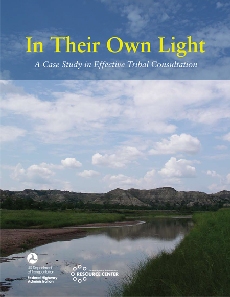
Caption: photo of cover of document showing the title, IN THEIR OWN LIGHT: A Case Study of Effective Tribal Consultation
IN THEIR OWN LIGHT: A Case Study in Effective Tribal Consultation
Effective Tribal consultation practices advance the Federal Highway Administration’s (FHWA) strategic goals related to environmental stewardship and streamlining, yet resource materials related to effective Tribal consultation in a transportation setting are not readily available—
particularly resource materials that provide real-life examples and demonstrate best practices
in Tribal consultation.
Using the Tribal consultation “success story” from North Dakota as the focal point, Stephanie Stoermer of the Environment Technical Services Team, FHWA Resource Center, developed the following case study to provide a stronger Tribal perspective regarding effective consultation practices and to help fill the identified need for additional Tribal consultation resource materials for the transportation community.
In addition to describing the history and context of the North Dakota Programmatic
Agreement (PA), the case study affords a broad overview of the regulatory and cultural context for Tribal consultation. The case study shares the lessons that the respective Tribes, as well as the FHWA North Dakota Division and the North Dakota Department of Transportation (NDDOT), have learned from the sustained effort to build lasting relationships and foster an atmosphere of mutual respect and trust. Accordingly, it provides practical insights that other FHWA Divisions and State DOTs should consider from when developing programmatic agreements with either individual or multiple Tribes.
—Don Cote, Team Manager, Environment Technical Services Team
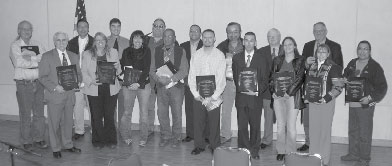
North Dakota Tribal Consultation PA Plaque Honorees, November 2006
Back row: Byron Olson, Archaeologist Standing Rock THPO; Conrad Fisher, THPO Northern Cheyenne; Mark Schrader, FHWA; Curley Youpee, Director Cultural Resources Department Fort Peck Assiniboine and Sioux Tribes; Franky Jackson, Consultant to Lower Sioux Indian Community; Calvin Grinnell, Cultural Resource Specialist, Mandan Hidatsa and Arikara Nation; Allen Radliff, FHWA; Kent Good, Consultant to NDDOT; Elgin CrowsBreast, Cultural Preservation Program Director, Mandan, Hidatsa, and Arikara Nation; Front Row: Francis Ziegler, NDDOT Director; Jeani Borchert, NDDOT Tribal Consultation Specialist; Pam Halverson, THPO Lower Sioux Indian Community; Ambrose Littleghost, Cultural Advisor, Spirit Lake Dakotah Nation; Richard Bird, Jr., Chairman Economic Committee and Councilman at Standing Rock Sioux Tribe; Scott German, Vice-Chairman, Sisseton Wahpeton Oyate; Shannon Blue, President Lower Sioux Indian Community; Dianne Desrosiers, THPO Sisseton Wahpeton Oyate.
In Their Own Light
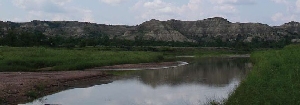
INTRODUCTION
The State of North Dakota is situated in the heartland of the northern Great Plains, a unique geographic area that has been inhabited for untold generations by various indigenous peoples with distinct cultures and lifeways. Due to Euroamerican incursions, and the subsequent settlement of the region in the nineteenth century, many of the indigenous peoples of the northern Great Plains were forced out of their ancestral territories, whereas those who remained in their homelands suffered the loss of most of their land base.
As a consequence of this tumultuous regional history, in addition to the Tribes who now reside on the reservations located within the political boundaries of North Dakota, several Tribes in South Dakota, Minnesota, and Montana also retain strong ancestral, cultural, and spiritual ties to the area. All of the Tribes—regardless of their current physical locations—possess demonstrable concerns regarding cultural resources, preservation of sacred places, the continuing destruction of places and things of cultural value, and the effects of this destruction on their respective cultural identities.
Section 106 of the National Historic Preservation Act of 1966, as amended (NHPA) requires Federal agencies to take into account the effects of their activities and programs on historic properties—those properties listed on, or found eligible for the National Register of Historic Places—and to provide the Advisory Council on Historic Preservation (ACHP) with a reasonable opportunity to comment with regard to such undertakings. The Section 106 review process seeks to balance historic preservation concerns with the needs of Federal undertakings by requiring consultation among the agency official and other parties with an interest in the effects of the respective undertaking on historic properties.
The Secretary of Interior’s Standards and Guidelines for Federal Agency Historic Preservation Programs Pursuant to the National Historic Preservation Act provides the following definition of consultation: “Consultation means the process of seeking, discussing, and considering the views of others, and, where feasible, seeking agreement with them on how historic properties should be identified, considered, and managed.” However, for the various parties involved, particularly Indian Tribes, the consultation process also speaks to achieving mutual trust, building lasting relationships, and working in a collaborative yet culturally respectful manner.
Amendments to the NHPA in the late 1980s and early 1990s recognized and expanded the role of Indian Tribes, Alaska Natives, and Native Hawaiian Organizations (NHOs) in the Section 106 review process. When the regulations implementing Section 106 (36 CFR 800, Protection of Historic Properties) were revised to clarify the role of Indian Tribes, Alaska Natives, and NHOs, a provision was included that encourages Federal agencies to enter into agreements with Indian Tribes and NHOs that would specify how they would implement responsibilities under the revised regulations. These agreements can address all aspects of a Tribe’s or NHO’s participation and can provide for additional rights or concurrence in agency decisions in the Section 106 review process.
Using a proactive approach to developing, executing, and implementing an agreement document with multiple Tribes, the North Dakota Department of Transportation (NDDOT) and the Federal Highway Administration’s (FHWA) North Dakota Division, in active collaboration with Tribes in North Dakota, South Dakota, Montana, and Minnesota, tailored the consultation process to meet the needs of all the consulting parties. The resulting Section 106 Programmatic Agreement for Tribal Consultation in North Dakota (PA) takes the intent of the law to heart and gives Tribal people a seat at the table in consideration of cultural resources that may be affected by transportation projects.
The following study examines the efforts of the NDDOT, and the FHWA North Dakota Division, in consultation with the Mandan, Hidatsa, Arikara Nation (Three Affiliated Tribes); the Turtle Mountain Band of Chippewa Indians; the Spirit Lake Dakotah Nation; the Standing Rock Sioux Tribe, the Sisseton/Wahpeton Oyate; the Fort Peck Assiniboine and Sioux Tribes; the Northern Cheyenne Tribe; the Crow Tribe (Apsáalooke Nation); and, the Lower Sioux Indian Community to develop and implement a collaborative programmatic approach to Tribal consultation that fully addresses Tribal concerns about cultural resources that could be affected by NDDOT projects, while considering NDDOT transportation project delivery needs.
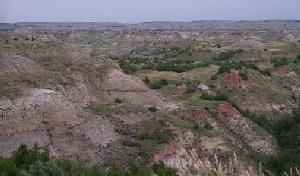
TRIBAL CONSULTATION AND EVOLVING FEDERAL POLICY
The approach to Tribal consultation adopted by the FHWA and the NDDOT in North Dakota grew out of several years of sustained relationship-building between the NDDOT and the consulting Tribes, with the strong support of the FHWA North Dakota Division. In order to understand how this approach developed over more than a decade, it is necessary to identify and briefly explain the elements of Federal policy related to Tribal consultation that helped to shape it.
The legal mandate that requires the FHWA and other Federal agencies to consult with Indian Tribes on a government-to-government basis has existed for more than 200 years. The consultation requirement was initiated with the Constitution, in Article I, Section 8 (also referred to as the “Commerce Clause”), which empowers Congress to regulate commerce and consult with foreign governments, between the States, and with the Indian Tribes. The constitutional mandate to respect Tribal sovereignty also has been repeatedly expressed in various statutes, executive orders, and policies, including the National Historic Preservation Act of 1966, as amended (16 U.S.C. 470) and Executive Order 13175—Consultation and Coordination with Indian Tribal Governments (November 6, 2000).
From the late 1970s onward, evolving Federal policy directed at strengthening the consideration of Tribal concerns considerably altered the relationship among Federal and State agencies and Indian Tribes. When explicit provisions for consultation with Indian Tribes and traditional leaders were added to the implementing regulations for Section 106 in 1986, the regulations made it clear that the special concerns of Indian Tribes in historic preservation issues often extend beyond Indian lands to other historic properties. In further acknowledgement of the critical need to consult with Indian Tribes regarding such historic properties, when the NHPA was amended in 1992, expanded requirements were included that require all Federal agencies to consult with Indian Tribes on undertakings that may affect properties of traditional religious and cultural significance on or off Tribal lands.
By the early 1990s, numerous accounts of Tribal consultation and collaborative effort “success stories” were appearing in cultural resource-related periodicals. However, in many cases, the actual implementation of Tribal consultation procedures was less than optimal. One of the logistical hurdles facing the participants in the Section 106 process during this period was how to conduct appropriate and meaningful consultation that would take into account the expanded role of Tribes in the process in the absence of implementing regulations.
Despite the long-standing Federal mandate requiring government-to-government consultation with Tribes and evolving Federal policies, aside from Federal land-managing agencies such as the Bureau of Land Management (BLM) and the National Park Service (NPS), many Federal agencies had little or no experience with Tribal consultation nor did they have formal Tribal consultation procedures in place. Additionally, since the 1992 amendments allowed Tribes to assume any or all of the functions of the State Historic Preservation Officer (SHPO) with respect to Federal undertakings on Tribal land, Tribes could now designate Tribal Historic Preservation Officers (THPOs) with whom Federal agencies would consult instead of the SHPO for undertakings occurring on, or affecting historic properties on, Tribal lands.
Understanding who, when, where, and precisely how to conduct meaningful consultation was problematic at best. Even when Federal agencies were successful in their attempts to identify and consult with the appropriate Tribe or Tribes, many Tribal governments’ limited resources were often overextended—not only by requests for consultation but by increasing demands from individual or even multiple agencies for information regarding traditional religious and cultural properties. Differing communication styles and cultural perceptions, as well as Tribal concerns about the release of confidential information to the public regarding these sensitive properties, made building mutual trust and establishing long-term relationships difficult.
As a result of the 1992 NHPA amendments and the subsequent promulgation of revised Section 106 implementing regulations, Federal agencies like the FHWA, which distribute and oversee Federal aid to State and local applicants but who themselves do not own or manage land, were faced with additional challenges, as were their State and local partners. As a Federally assisted, State-administered partnership, the Federal-aid highway program makes Federal-aid highway funds available to the State Departments of Transportations (SDOTs), who in turn work with local officials to decide which transportation projects are developed. The FHWA’s role is to provide oversight and cooperate with SDOTs to ensure compliance with Federal requirements such as NEPA and NHPA.
Under Title 23, U.S. Code, the SDOTs are the responsible agencies for all aspects of project development, including environmental review and archeological survey work before and during construction. Despite the fact that an SDOT, as the applicant for Federal assistance, carries out the many responsibilities related to project development, as a Federal agency the FHWA still has the statutory obligation to fulfill the requirements of Section 106.
In crafting 36 CFR 800, the ACHP recognized that in the course of fulfilling their Section 106 responsibilities, Federal agencies sometimes choose to rely on applicants to begin the 106 process. Accordingly, Section 800.2 (c) (4) of the Section 106 implementing regulations allows the FHWA, as agency official, to authorize an SDOT, as the applicant for Federal assistance, to initiate consultation with the SHPO/THPO, and others, provided that the FHWA notifies the SHPO/THPO of such authorization. The FHWA retains its government-to-government consultation responsibilities and remains legally responsible for all findings and determinations.
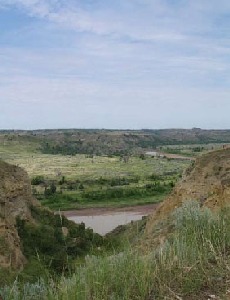
BUILDING RELATIONSHIPS
In the interval between the 1992 NHPA amendments and the promulgation of the final version of the implementing regulations, nearly a decade later, NDDOT’s cultural resource professionals recognized that their agency needed to be more proactive in the area of Tribal consultation, particularly since the role of Indian Tribes in the Section 106 process had been greatly expanded.
Jeani Borchert, NDDOT archeologist and current NDDOT Tribal Liaison later recalled:
"So many of us who work in cultural resources began to consult with the Tribes—at least on an occasional basis—many years ago but it really wasn’t enough . . . the mandate in the 1992 amendments to the National Historic Preservation Act changed that approach. It required that we include Tribes in consideration of effects to historic properties. In 1999, the regulations implementing those changes to the National Historic Preservation Act were in place, and to the NDDOT and the North Dakota Division of Federal Highways’ credit, it was decided to approach these changes from a proactive perspective—fulfilling not only the letter of the law but its intent. To make Tribes our partners in considering the effects of transportation projects on places of cultural importance."
Veteran archeologist Kent Good (now retired from the NDDOT) is credited with launching the NDDOT Tribal consultation effort. By Good’s own account, when he came to the NDDOT in 1989 as the agency’s only cultural resource person: “To say the least it was a challenge. And when the law was amended to include consultation . . . I had the opportunity to start the consultation process. I had no manual, I had no book, I didn’t know really what I was doing, other than that I love people. And I think my heart was in a good place.” So, on behalf of the NDDOT, Good set out to meet with the Tribes and to begin laying the foundation for future consultation efforts.
As he traveled to the reservations within North Dakota to meet with the Tribal leaders, Good’s resolve was often tested and there were several instances when he needed to make repeated visits before he could arrange meetings with the appropriate individuals. Building trust and forging relationships was not always easy, and at times the learning curve was steep. When he discusses his experiences today, Good gratefully acknowledges the positive role that Tribal people have played in teaching him patience and respect.
Reflecting on those early attempts at sparking meaningful cross-cultural dialogues, Good says:
"My brother Ambrose and my sister Anna [Littleghost] taught me that you wear your heart on your head. I’d always been accused of wearing it on my sleeve my whole life and in our culture that’s not a good thing. You’re not calculating enough, you’re too much of a feeling person. That’s just the way I am. But I was really glad to find out that it’s OK to be a feeling person and with Tribal people you wear it on your head—it governs the way that you feel. So I approached it from that point of view, with a heart and above all with respect. And I respect all people."
Good’s efforts in building personal and professional relationships with the Tribal representatives were a major contribution in creating the existing climate of mutual trust. As Robert Christensen, NDDOT Cultural Resource Section Leader, observes: “Only after this foundation of trust was established could we really, truly move forward with meaningful consultation of any kind. Even though the Tribal representatives have changed through the years, as has the NDDOT Tribal consultation person, this foundation of trust allowed the process to continue smoothly.”
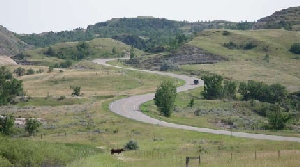
Over the next few years, NDDOT’s consultation outreach efforts extended beyond the political boundaries of the State of North Dakota. Eventually, individual consultation was taking place with eleven Tribes from eight reservations. Traditional cultural and spiritual leaders and Tribal elders also were consulted and included in the decision-making process for several projects. For most regular projects, NDDOT only consulted with the Tribes when archeological sites had been identified. NDDOT representatives would visit each reservation, provide documentation, discuss the issues, and then summarize the discussions on a consultation form that all would sign. NDDOT would then follow-up according to the terms of the respective signed agreement.
The foundations of a collaborative approach between NDDOT and the Tribes—as well as NDDOT’s heightened levels of sensitivity and commitment to Tribal cultural and spiritual concerns—were established during the decade or so of project-by-project consultation. Valuable insights were gained during consultation with multiple Tribes on individual projects, particularly such projects as the Jamestown Bypass and U.S. Highway #2 Minot to Williston. These insights would later help to shape the direction of the final PA.
As part of the consultation for Jamestown Bypass project, NDDOT convened a 2-day meeting in Jamestown, North Dakota, with representatives from the Spirit Lake Nation, Turtle Mountain Band of Chippewa Indians, Standing Rock Sioux Tribe, and Sisseton-Wahpeton Oyate after several stone features and mound sites were identified within a mile wide corridor. Tribal representatives were taken to visit the sites and asked what they knew about the project area. More importantly, the consulting Tribes were asked what they thought needed to be done. The Tribes indicated that the area was indeed significant and that the features and mounds were there because of the crescent in the river. They wanted to see this area protected.
As a direct result of the consultation, the NDDOT and the FHWA rerouted the proposed by-pass to the east of the sites and purchased protective easements around the sites bordering the crescent in the river to protect them from development that might spring up along the bypass. Accordingly, an agreement to this effect was executed by the FHWA, NDDOT, SHPO, and the respective consulting Tribes in 2000.
For the U.S. Highway #2 Minot to Williston project, the NDDOT discussed the project with the five Tribes with which they currently were working, namely the Three Affiliated Tribes, Spirit Lake Nation, Turtle Mountain Band of Chippewa Indians, Standing Rock Sioux Tribe, and Sisseton-Wahpeton Oyate. Both the Standing Rock Sioux Tribe and Three Affiliated Tribes requested that NDDOT work with Ronald (Sam) Little Owl. The NDDOT took Mr. Little Owl to each site and recorded his interpretations and discussions of the importance of each site. With Mr. Little Owl’s permission, the recording was transcribed and non-sensitive information was later summarized for the NEPA document.
The NDDOT also took Mr. Francis Cree (Turtle Mountain Chippewa), Ms. Jane Martin (Turtle Mountain Chippewa), and Ms. Pemina Yellow Bird (Three Affiliated Tribes) to visit certain sites in the White Earth Valley. Ms. Yellow Bird also accompanied Mr. Little Owl on another occasion. During discussions with Ms.Yellow Bird and Mr. Little Owl, it was suggested that NDDOT needed to consult with the Fort Peck Assiniboine and Sioux Tribes and the Crow Tribe (Apsáalooke Nation) from Montana. The NDDOT followed through on this suggestion.
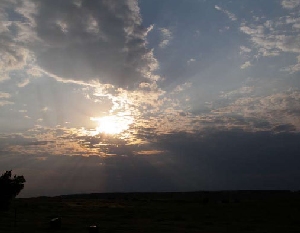
When Kent Good contacted the Fort Peck Assiniboine and Sioux Tribes and the Crow Tribe (Apsáalooke Nation) to initiate consultation for the project, Mr. George Reed, Secretary of Cultural Education for the Crow Tribe (Apsáalooke Nation), indicated that NDDOT needed to consult with the Northern Cheyenne Tribe as well. The U.S. Highway #2 Minot to Williston project would mark the beginning of consultation efforts with Tribes residing in Montana who have ancestral ties to North Dakota.
It was clear from consultation on the U.S. Highway #2 Minot to Williston project that the Tribes primarily were concerned with impacts to extant stone features. As a result, NDDOT engineers worked very hard to avoid direct impact to these features. The stone features determined eligible for the National Register were completely avoided, while other stone features were left intact by narrowing the median and changing the slopes and ditch bottoms. The consulting Tribes were very pleased that the NDDOT actually found a way to leave all of the stone features in place.
NDDOT representatives continued to visit each reservation on a regular basis to build and sustain relationships as well as to share information. As previously noted, although the FHWA cannot delegate its government-to-government responsibility and overall consultation and coordination duties, the agency may rely on SDOTs to carry out day-to-day and project specific consultation, as long as the respective Tribes agree, per Section 800.2 (c)(4) of the Section 106 regulations. With this in mind, Kent Good and Cal Larsen, the North Dakota FHWA Division Office’s former environmental coordinator, visited each reservation and asked the respective Tribe or Tribes whether they objected to NDDOT’s continued role in day-to-day consultation on behalf of the FHWA. All of the Tribes agreed that the existing arrangement was satisfactory and should continue.
TAKING A COLLABORATIVE APPROACH
Although project-specific consultation with the respective Tribes on an individual basis continued to be the standard operating procedure, the NDDOT cultural team identified the critical need to refine NDDOT’s approach to consultation. According to Jeani Borchert, once relationships with Tribal representatives were firmly established, NDDOT recognized the need to formalize the process according to the needs of the respective Tribes. One way to accomplish this would be to develop agreement documents that would identify and meet Tribal expectations regarding cultural heritage issues, as well as increase the likelihood that future Tribal consultation would lead to acceptable outcomes for all the stakeholders.
Because such a heightened effort would require an additional investment of limited resources, the proposal was elevated to NDDOT management for their consideration. Citing the existing level of commitment to Tribal consultation and a successful track record—as well as the identified need to remain proactive in the constantly evolving Section 106 arena—the proposal demonstrated that an additional investment could lead to future savings in the delivery of transportation projects.
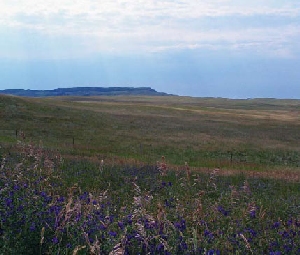
With the approval of their upper-level management and the support of the FHWA Division Office, the NDDOT cultural staff actively began to explore opportunities to develop individual agreement documents with the Tribes with whom NDDOT and FHWA had been consulting on a project-by-project basis. While the initial attempts were not particularly successful, in the course of trying to develop the individual documents, conversations arose between the NDDOT and several Tribes regarding the possibility of developing a programmatic agreement with multiple Tribes that would be drafted with a significant amount of Tribal input.
As previously noted, NDDOT initially sought to develop agreement documents with the Tribes individually rather than collectively. Through NDDOT’s efforts to identify and address Tribal concerns, however, the concept of a unified group approach developed and gradually gained momentum. The NDDOT not only nurtured existing relationships, but they also fostered new ones by requesting Tribal input and identifying potential Tribal concerns about the consultation process.
Rather than going to the Tribes with preconceived notions and draft agreement documents in hand, the NDDOT first went to them and asked what each Tribe envisioned in terms of effective consultation. A prototype agreement document was developed only after NDDOT had consulted with the appropriate Tribal representatives on each of the eight reservations.
The proposed PA would dramatically alter how the NDDOT and the FHWA consulted with the Tribes: now all of the parties would work together as a group. The idea to work together as a group came from the consulting Tribes, who felt that with their varying expertise they were stronger and more effective when functioning together. Taking a collaborative approach to consultation would also reduce the demands on their time. The NDDOT and the FHWA encouraged this approach since it supports mutually beneficial goals and could lead to more predictable outcomes.
The issues addressed in the PA were carefully written and rewritten by all participants to insure that those items they believed important to document were included in the final agreement. In this regard, the consulting Tribes, the NDDOT, and the FHWA all identified their primary concerns. These concerns were subsequently incorporated into the final agreement document. Although the concerns identified by the participants as important to address in the PA are not necessarily identical, they tend to complement each other and reinforce the overall collaborative spirit of the PA.
The consulting Tribes believed that the primary concerns that needed to be addressed in the context of the PA were acknowledgement of their cultural identities—who they are—in regard to the language and the “heart” expressed in the document; commitment to providing an explanation of management decisions reached by the NDDOT and the FHWA in regard to issues of concern to them; confidentiality of information discussed with the NDDOT and the FHWA that the consulting Tribes regard as sensitive and privileged; and, a willingness to cover expenses to facilitate their participation in this effort. The NDDOT and the FHWA desired a clearly defined approach to Tribal consultation that was honest and straightforward. In addition, the FHWA desired an approach that clearly excluded types of projects that were not of concern to the consulting Tribes, thus facilitating and streamlining the process. They also sought an approach that satisfied the Section 106 compliance issues for the FHWA and clearly met the needs of the consulting Tribes so that the relationship between the various parties would be based on mutual trust and respect. Further, all of the participating parties expressed a strong mutual interest in assuring that the PA would afford ongoing opportunities for cross-cultural training.
While other SDOTs and their respective FHWA Divisions have developed their own programmatic approaches to Tribal consultation that are tailored to their own circumstances as well as to the individual preferences of the Tribes with whom they must consult, this PA is unique in that representatives of the consulting Tribes took an active role in drafting the actual agreement document, with the full support of the NDDOT and the FHWA North Dakota Division. The process of working toward this agreement allowed for the development of relationships of trust and respect. Sustaining these relationships is integral to a streamlined, effective Tribal consultation process.
The PA is a living document that builds on the past yet looks to the future. As such, the PA respects Tribal sovereignty and the individual cultural identities of the consulting Tribes while emphasizing collaboration and mutual respect. Working through a Tribal Consultation Committee (TCC), rather than on an individual Tribal basis, allows a clearer understanding of relevant issues and concerns, which will lead to effective cultural resource management and better decisions. The TCC embodies the principles of the PA and looks beyond project-specific consultation in establishing and achieving mutually determined goals.
Although the original idea for a PA for Tribal consultation did not initiate with the FHWA, the Division Office has been very active in developing and implementing the agreement. Mark Schrader, Environmental and Right-of-Way Engineer, has represented the FHWA Division Office since the working group began drafting the final PA, derived from the prototype PA written by Jeani Borchert and Kent Good after the vision of their Tribal partners became clear. Schrader provides the FHWA perspective that is essential to informed decision-making in such a collaborative setting.
The NDDOT emphasizes that the FHWA’s support and understanding is critical to the success of the Tribal consultation effort. The PA should be viewed as one product of a long-term, mutual effort, rather than the end result. While the agreement provides for consultation on NDDOT projects, it also facilitates a healthy exchange of ideas among the NDDOT, FHWA, and the Tribes. This increased dialogue among the parties results in the discussion of a variety of topics and controversial issues. The outcomes of these discussions need to be understood by FHWA Division personnel, as well as NDDOT cultural resource personnel, since they could affect the decision-making process.
Under the terms of the final PA, the TCC (composed of representatives from each consulting Indian Reservation, NDDOT, and the FHWA) agree to meet at least twice a year to discuss projects and policy with regard to NHPA compliance. To facilitate these discussions, the NDDOT will provide a packet of information summarizing upcoming projects prior to a scheduled meeting.
As the consultation efforts for pre-PA projects like the Jamestown Bypass and U.S. Highway #2 Minot to Williston demonstrate, additional onsite consultation for certain projects may also be needed to help identify possible impacts or to obtain firsthand knowledge of issues relating to cultural concerns. Accordingly, there are PA provisions for onsite consultation that provide flexible guidelines for TCC participation and encourage Tribal elders, or other individuals identified by the TCC, who have specific knowledge of the area, project, or resource to attend onsite meetings.
In addition to the TCC meetings, NDDOT will continue to meet with the consulting Tribes individually at each Committee member’s individual office at least once per year and will continue to consult with the Tribes or committee members who are identified at the meetings as contacts for further consultation in regard to a specific project, resource, or issue. The NDDOT will continue individual consultation with any Tribe that does not become a party to the PA. Consultation will continue as defined through individual discussions or formal agreements.
In order to involve the consulting Tribes’ cultural resource personnel to a greater extent and at an earlier point in the planning process, the current Statewide Transportation Improvement Program (STIP) will be provided to the TCC. Access to the STIP will provide the Tribes’ cultural resource personnel advance notification of the nature, scope, and location of future projects and will give the TCC the opportunity to review projects well in advance of project development.
The potential for public disclosure of certain sensitive information shared during the course of consultation is a key concern for the consulting Tribes. The PA acknowledges the need for confidentiality of certain Tribal spiritual and cultural information and incorporates measures to insure that information that is identified as sensitive will remain confidential and protected from public disclosure upon request.
Although the final PA was crafted during the course of two 2-day meetings held in Bismarck, the executed agreement represents the outcome of several years of building relationships and initiating dialogues.
Following the PA signing ceremony in November 28, 2006, at the North Dakota Heritage Center in Bismarck, Elgin Crows Breast, the Tribal Historic Preservation Officer, and the NAGPRA representative for the Three Affiliated Tribes, candidly described the development of the agreement as, “Three years of actually hammering it out and just bearing down and reading word for word . . . scratching this and throwing that and finally we come up with this document… but it’s going to be a good piece of work for us.”
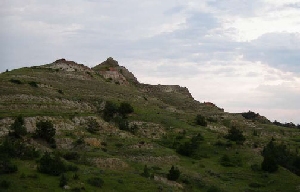
William Ambrose Littleghost, honored elder and Cultural Advisor of the Spirit Lake Dakotah Nation placed the PA in a more historical context by discussing Indian and non-Indian relations: “Again, we always have to come to a decision . . . that we have to sign papers. But you know that since the beginning of time, when the Europeans came until today, we’re still signing papers. In good faith and in good ways so that we can live together in harmony like human beings.” Mr. Littleghost called for the signatories of the PA to have respect for each other, adding: “If we work together, we can make this thing work. Like my grandfather who said ‘Grandson, we signed peace treaties—we’re still waiting for the outcome.’ Let us get to work on this so we can get some results.”
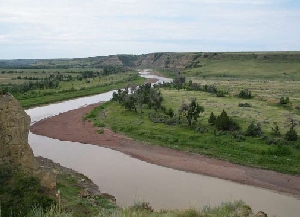
Conrad Fisher, Tribal Historic Preservation Officer for the Northern Cheyenne Tribe provided this appraisal of the PA: “I think that if we look at any agreement, even treaties, I think that they have evolved over time . . . but today we find a PA that’s probably as good as they come just because we have a lot more ownership and responsibility and empowerment in these type of activities.”
Additional insight regarding the importance of the agreement to insuring timely and effective consultation was provided by Curley Youpee, Cultural Resources Department Director for the Fort Peck Assiniboine and Sioux Tribes: “The idea of consultation between different peoples—non-Indian, Indian, and Native American folks—it’s a unique opportunity to see each other,” Mr. Youpee stated, noting that, “I believe that’s what this programmatic agreement does. It allows us to see each other in our own light. This programmatic agreement will allow us to see what has been done. What has been paved and how to conduct ourselves in a way that has mutual benefit.”
LOOKING TO THE FUTURE
Developing and executing the programmatic agreement are only a part of establishing and maintaining an effective, mutually beneficial Tribal consultation process in North Dakota. Although the potential benefits are many, the actual implementation of the terms of the PA brings additional responsibilities and challenges to all of the stakeholders. As Allen Radliff, former North Dakota Division Administrator remarked during the PA signing ceremony: “The hard work is just beginning. It’s up to all of us to make sure that it works as intended. We can’t just sit back and wait. We must show that this will work for us. As Mr. Littleghost mentioned we need to put our heart into it—we need to trust one another. I know we can do that.”
The PA emphasizes that, “Consultation can
be generalized as a process of learning through education and interaction.” This statement reinforces a concern identified by all the participants during the development of the PA—the need for cross-cultural education and training that supports and enhances the consultation process.
Under the terms of the PA, the FHWA, the NDDOT, and the consulting Tribes have agreed to commit time, provide opportunities and personnel, and seek funding for cross-training related to Tribal and transportation cultural resource issues. The goals of such cross-training include improving of relationships, a greater understanding of cultures and perspectives, and the building of trust.
In addition to addressing project specific and planning issues, the TCC meetings include thoughtful discussions of certain topics that are broader in scope but have a direct bearing on how successful consultation will be in terms of addressing Tribal concerns as well as meeting mutually determined goals. These topical discussions have led to the identification of prioritized training needs that focus on heightening cultural awareness as well as regulatory and compliance matters.
Examples of prioritized training that are being considered (as requested by the consulting Tribes) include training for Tribal monitors and cultural sensitivity training for NDDOT’s archeological contractors. Whereas Tribal concerns regarding the lack of systematic use of Tribal monitors in the context of cultural surveys and perceived lack of cultural sensitivity on the part of archeologists were raised and discussed prior to the development the PA, the timely initiation of training in these areas is a critical step towards fully implementing the agreement. In keeping with the spirit of cross-cultural collaboration, the proposed training would be jointly developed and jointly delivered by NDDOT and the consulting Tribes.
Another important initiative tied to the implementation of the PA is the NDDOT’s forthcoming Cultural Heritage Manual. All of the signatories to the PA appreciate the need for a manual that addresses cultural differences because these differences can be a deterrent to coming to an agreement or achieving consensus.
Envisioned as an educational work to help both Indians and non-Indians with cultural heritage issues, the manual was developed by Kent Good with significant input from Tribal representatives. The manual is intended to facilitate an exchange of knowledge without judgment and to accommodate the development of a framework for consultation. Because the manual is a tool to be used to expedite consultation, it is designed to incorporate modifications as needed. Although intended for the signatories of the PA, it is hoped that the manual, or certain elements of the manual, could be adapted to the consultation needs of others.
LESSONS LEARNED
The development and implementation of the PA exemplify several effective Tribal consultation practices that previously have been identified in major studies, including Tribal Consultation: Best Practices in Historic Preservation (NATHPO 2005). First, the PA is sensitive to Tribal concerns and recognizes the inherent rights of the consulting Tribes to retain and preserve those places that they value; second, it affirms the joint commitment of the NDDOT, the FHWA, and the consulting Tribes to establish and sustain a relationship of mutual trust and respect through open communication and collaborative problem-solving; third, the PA encourages early involvement of the consulting Tribes in project planning by providing them with the opportunity to review projects well in advance of project development.
In the context of the current study, however, it is important that individuals involved in the ongoing collaborative process of developing and implementing the PA share their insights regarding the best practices in Tribal consultation exemplified by this PA.
Approach Tribal consultation efforts with a “good heart.” The importance of having a “good heart” when engaging in Tribal consultation underlies all the aspects of the PA and related initiatives. According to Jeani Borchert (NDDOT): “If you go in with a good heart, the process will develop appropriately for all those involved. So ‘best practices’ is really having the ‘heart’ to consult.” Mark Schrader (FHWA) adds: “Consultation is more than listening and seeing, it also involves feeling. In order to feel, you need to use your heart.”
Acknowledge and respect Tribal sovereignty and the importance of government-to-government relationships. Curley Youpee (Fort Peck Assiniboine and Sioux Tribes) emphasizes that Tribal consultation must truly be consultation among sovereign nations: “The concept of consultation between nations and nations . . . understanding that Tribes are nations within nations. We hold on to that nation integrity. We are sovereign within a nation—that’s who we are.”
Recognize that Tribal consultation goes far beyond merely complying with the law. The desire for Tribal input must be genuine, and once Tribal input has been obtained, it must be acknowledged and acted upon. In this regard, Robert Christensen (NDDOT) has commented: “Start with the idea that the goal is to ‘do the right thing.’” Christensen also cautions: “Ask questions and begin a dialogue, but then LISTEN. Keep an open mind where everything is possible, there just may be some ‘challenges.’”
Recognize that the relationship between Indians and non-Indians has been forged by the painful legacies of the past. An often unsettling and uncomfortable concept for non-Indians to grasp is that contemporary Native Americans experience pain and a profound sense of loss very acutely. However, in order to work together at any meaningful level, this is a fact that must be openly acknowledged and respected by non-Indian participants throughout consultation. Curley Youpee’s powerful words reinforce the importance of respecting cultural identity and openly acknowledging the emotional aspects of consultation: “See us, see who we are. We pain. We have pain and grief because our burial grounds are going to be disrupted or disturbed. There’s pain there. We are human. The programmatic agreement brings that as well. It allows Indian people to be human.”
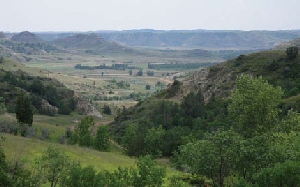
Be willing to commit time and resources. Another key to effective consultation is taking the time to both build and sustain relationships among the parties. Understanding the long-term, temporal elements of the process is vital. The participants in PA efforts repeatedly stress the vital importance of working together. As Conrad Fisher (Northern Cheyenne) commented: “One of the things that is common knowledge on the Northern Cheyenne that we say—I’d always hear it as a child from my grandmother—is [Cheyenne expression]. What that means is ‘nothing is hard if we work together.’ It’s a simple message but it has a powerful meaning behind it. And I think that’s a good way to look at this PA.”
Identify Tribal needs, including financial constraints that would preclude active and ongoing participation in the consultation process. Under the terms of the PA, the NDDOT is committed to host the TCC meetings and cover the travel expenses for up to two representatives from each participating reservation. This long-term commitment fosters continued involvement of Tribal representatives who might not otherwise be able to participate.
Be aware of cultural differences, and be cognizant that your own way is not the “only way,” and it may not be the “best way.” The signatories to the PA agree that not understanding cultural differences can be a roadblock to effective consultation and can lead to impasses. As Curley Youpee (Fort Peck Assiniboine and Sioux Tribes) has observed: “Now, much of this cultural, this Native American culture, has little to do with non-Indians, yet the spirit of that culture is what brings us strength and continues our life, and struggle for peace and harmony amongst the non-Indians. And so, in developing a PA, in coming together for consultation, in developing a PA for the sake of some type of synergy, bringing about peace amongst ourselves—that’s not always an easy task.”
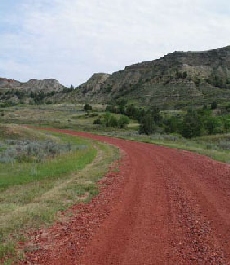
THE NORTH DAKOTA TRIBAL CONSULTATION PA IN RETROSPECT
As the Section 106 Programmatic Agreement for Tribal Consultation in North Dakota demonstrates, rather than viewing cultural differences as impediments that must be overcome to reach consensus, effective Tribal consultation practices must be grounded in appreciation of, and respect for, those differences. In this regard, the collaborative approach to Tribal consultation taken by the FHWA, the NDDOT, and the consulting Tribes is very much in keeping with the Department of Transportation (DOT) Order 5301.1, Department of Transportation Programs, Policies, and Procedures Affecting American Indians, Alaska Natives, and Tribes (November 11, 1999), which identifies the responsibility of each DOT component in carrying out policies, programs, and activities affecting American Indians, Alaska Natives, and Tribes to insure that an effective mechanism is in place to achieve several goals. Among those goals is to adapt processes to recognize American Indian, Alaska Native, and Tribal culture and traditions.
Focusing on program-wide approaches, this PA represents a joint commitment to establishing a relationship of mutual trust and respect and recognizing the inherent rights of Tribes to retain and preserve those places that they value. The PA establishes a jointly-developed protocol for consultation with the Tribes regarding highway projects, and excludes certain types of transportation projects with limited or no potential to affect cultural resources important to the Tribes from the consultation process. In order to help make the Section 106 process more predictable, the PA also provides for specific timeframes and responsibilities for the consulting parties to complete the consultation process.
The agreement places emphasis on jointly developed avoidance measures for important cultural resources as the primary option. However, if avoidance is impossible or impractical—given other concerns of equal importance—the NDDOT and the FHWA are committed to working with the Tribes for appropriate and respectful resolution of any unavoidable effects.
Perhaps more importantly, the PA looks beyond project-specific consultation and provides a solid framework for establishing and achieving common goals. Foremost among these goals is building and maintaining relationships through open communication in a culturally sensitive setting.
This agreement can serve as a model for other FHWA Divisions and SDOTs seeking to consult with multiple Tribes in a proactive, culturally sensitive and collaborative manner. As this study of the long-term Tribal consultation efforts in North Dakota illustrates, the steps involved in developing and implementing a programmatic agreement of this nature should be viewed as part of a continuum that begins by building relationships and sharing knowledge and then progresses to ongoing collaboration in an atmosphere of mutual respect and trust.
For information concerning the North Dakota Section 106 PA for Tribal consultation, please contact:
Mark Schrader
FHWA North Dakota Division
701-250-4343 ext. 111
mark.schrader@fhwa.dot.gov
Jeani Borchert
Cultural Resource Section
North Dakota Department of Transportation
701-328-4378
jborcher@nd.gov
For information regarding training and technical assistance related to Tribal consultation issues offered by the FHWA Resource Center, please contact:
Stephanie Stoermer
FHWA Resource Center
720-963-3218
stephanie.stoermer@fhwa.dot.gov
David Grachen
FHWA Resource Center
404-562-3668
david.grachen@fhwa.dot.gov
Additional Tribal Consultation Resources:
Federal Highway Administration (FHWA). Section 106 Tribal Consultation Q & A’s.
https://www.fhwa.dot.gov/hep/tribaltrans/tcqa.htm
The Advisory Council on Historic Preservation (ACHP). The ACHP Native American Program:
Guidance for Federal Agencies. http://www.achp.gov/nap.html
National Association of Tribal Historic Preservation Officers (NATHPO). Best Practices in Historic Preservation:
Tribal Consultation. (2005). http://www.nathpo.org/publications.html
AASHTO Center for Environmental Excellence. Tribal Consultation.
http://environment.transportation.org/environmental_issues/tribal_consult/